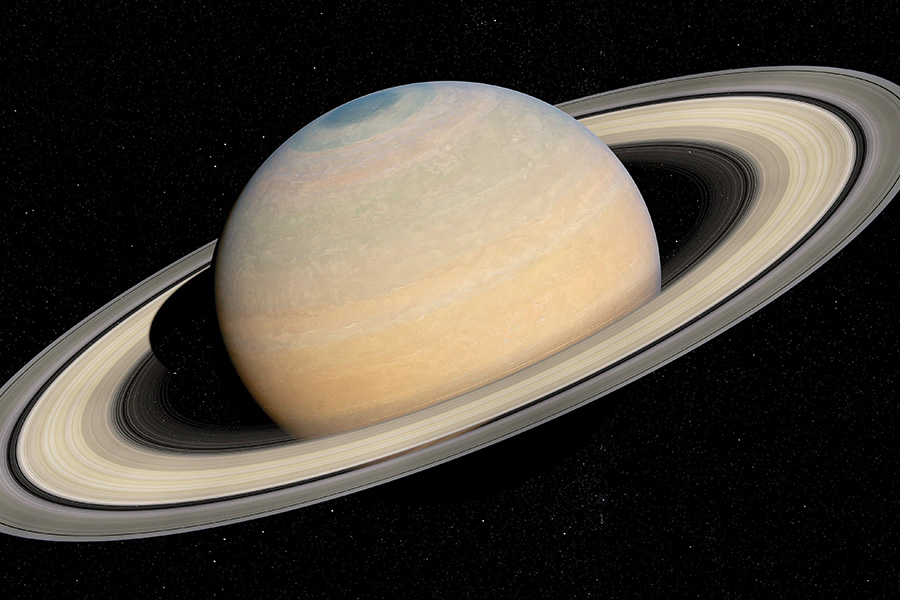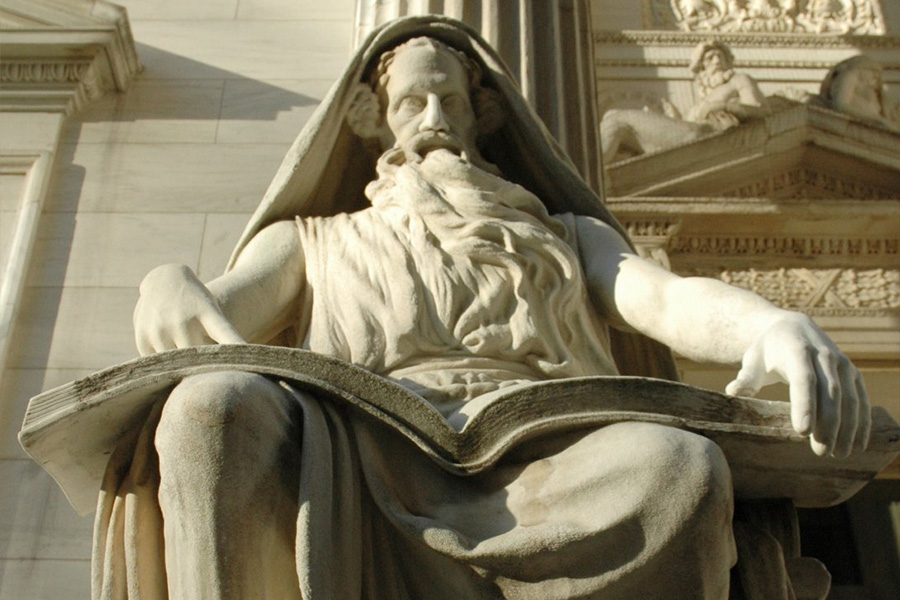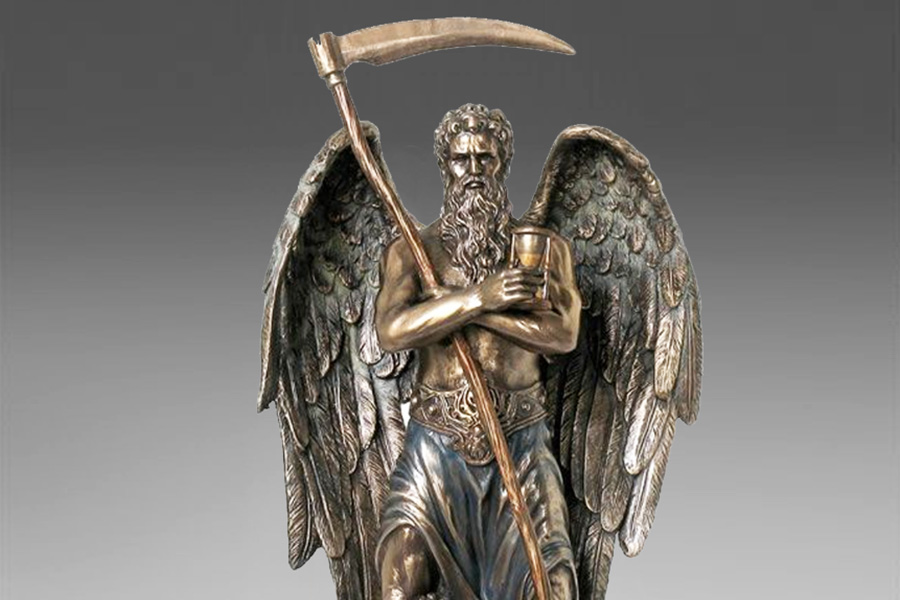The word shabat (𐤔𐤁𐤕) means “rest” meaning to relieve weariness by cessation of exertion or labor.
The Paleo-Hebrew language or the original language of the Ābarayam is one spoken with an emphasis on the rauakh (breath, wind, spirit). With the language of the Ābarayam, each letter has a meaning and a number associated with it that adds meaning to each word they’re used with. Below you will be able to learn more about the letter in Ancient Hebrew, Yiddish Hebrew, Greek, and much more.
Letter Meanings
| Letter | Meaning |
|---|---|
| 𐤔 (sh) – sha | teeth, eat, consume, destroy, bite, two, change, divide, press, repeat |
| 𐤁 (b) – ba | House, family, “in” |
| 𐤕 (t) – ta | mark, sign, covenant, signature, identification of people, places, or things |
| Ābarayat Number | 702 = 300 (sh) + 2 (b) + 400 (t) |
| Hebrew Gematria | 202 = 90 (s) + 8 (h) + 1 (a) + 2 (b) + 1 (a) + 100 (t) |
| English Gematria | 306 = 114 (s) + 48 (h) + 6 (a) + 12 (b) + 6 (a) + 120 (t) |
| Simple Gematria | 51 = 19 (s) + 8 (h) + 1 (a) + 2 (b) + 1 (a) + 20 (t) |
Based on the meaning of the letters the word could be defined as:
- “Consume a family of covenant”
- “Consume a house of covenant”
- “Destroy a family of covenant”
- “Destroy a house of covenant”
- “Change a family of covenant”
- “Change a house of covenant”
- “Press a family of covenant”
- “Press a house of covenant”
- “Repeat a family of covenant”
- “Repeat a house of covenant”
Definitions for 𐤔𐤁𐤕 / shabat
| Language | Word | Transliteration | Pronunciation | Definition |
|---|---|---|---|---|
| Ābarayat | 𐤔𐤁𐤕 | shabat | shaw-bawt | to cease, desist, rest, cause to, let, make to cease, celebrate, cause make to fail |
| English | rest | rest | rest | the refreshing quiet or repose of sleep |
| Hebrew | שָׁבַת | shabath | shaw-bath' | to cease, desist, rest |
| Arabic | ||||
| Greek | σάββατον | sabbaton | sab'-bat-on | the Sabbath, a week. |
Images for 𐤔𐤁𐤕 / shabat



Definitions for 𐤔𐤁𐤕𐤉 / Shabatay
When adding the 𐤉 (yad) to the end of a word, it creates a possessive of the original word. It can either signify “my…” or identify a member of a nation. For example, 𐤏𐤁𐤓 (Ābar) is the progenitor, but 𐤏𐤁𐤓𐤉 (Ābaray) is the singular descendant of him also known as a Hebrew.
| Language | Word | Transliteration | Pronunciation | Definition |
|---|---|---|---|---|
| Ābarayat | 𐤔𐤁𐤕𐤉 | Shabatay | shaw-bawt-ey | a Lauay / Lauayay |
| English | Levite | Levite | lee-vahyt | a member of the tribe of Levi. |
| Hebrew | שבתי | shevtai | shev-tay | a Levite |
| Arabic | ||||
| Greek | Κρόνος | Krónos or Cronus | kroh-nuhs | the leader and youngest of the first generation of Titans, the divine descendants of the primordial Gaia (Mother Earth) and Uranus (Father Sky). |
Images for 𐤔𐤁𐤕𐤉 / Shabatay



Important Note
The word 𐤔𐤁𐤕𐤉 (shabatay) can also be written as 𐤔𐤁𐤕𐤀𐤉 (shabataay). The second written is closely related to the naming of the planet Saturn. It is possible to that the 𐤀 (alaph) is added based on the context of the word if you’re referring to humans versus celestial topics.
The Planet
Saturn is the sixth planet from the Sun and the second-largest in the Solar System, after Jupiter. It is a gas giant with an average radius of about nine and a half times that of Earth. It has only one-eighth the average density of Earth but is over 95 times more massive.
The planet’s most notable feature is its prominent ring system, which is composed mainly of ice particles, with a smaller amount of rocky debris and dust. At least 83 moons are known to orbit Saturn, of which 53 are officially named; this does not include the hundreds of moonlets in its rings. Titan, Saturn’s largest moon and the second largest in the Solar System, is larger (while less massive) than the planet Mercury and is the only moon in the Solar System to have a substantial atmosphere.
Saturn is named after the Roman god of wealth and agriculture and the father of Jupiter. Its astronomical symbol (♄) has been traced back to the Greek Oxyrhynchus Papyri, where it can be seen to be a Greek kappa-rho with a horizontal stroke, as an abbreviation for Κρονος (Cronus), the Greek name for the planet. It later came to look like a lower-case Greek eta, with the cross added at the top in the 16th century to Christianize this pagan symbol.
The Romans named the seventh day of the week Saturday, Sāturni diēs (“Saturn’s Day”), for the planet Saturn.
Saturn and Shabat
The name Idaei is derived from the name of Mount Ida, the highest mountain in Crete, around which the Idaei dwelt. This was a mountain sacred to the Titaness Rhea or Magna Mater, the sister and wife of Cronus or Saturn. Tacitus likewise relates the speculation that the name Judaei, from which 𐤉𐤄𐤉𐤃𐤉 (Yahayaday) is derived, is “the barbarous lengthening of Idaei.”
Indeed, with the daktyloi Idaioi or Idaean dactyls, a mythical race of dwarves born of Rhea, we find a symbol for proto-Jews or 𐤉𐤄𐤉𐤃𐤉𐤌 (Yahayadayam) that appears with the Egyptian Ptah and the Greek Hephaestus, often indicated their master. This motif will reoccur in Norse myth.
Both the ancient Hellenes and the 𐤏𐤁𐤓𐤉𐤌 (Ābarayam) would identify Saturn or Cronus with the Semitic 𐤀𐤋 (Al), one of the names used to describe The Most High in the 𐤏𐤁𐤓𐤉 (Ābaray) scriptures. Specifically the Greeks would identify Cronus with the Phoenician God of Time 𐤀𐤋 𐤏𐤅𐤋𐤌 (Al Āualam) which would be rendered Oulomos in the Greek. Cronus was often considered synonymous with Coronus, a Greek deity who was the Personification of Time.
𐤀𐤋 𐤏𐤅𐤋𐤌 (Al Āualam) is a name used for 𐤉𐤄𐤉𐤄 (Yahayah) in the 𐤏𐤁𐤓𐤉 (Ābaray) scriptures such as in 𐤁𐤓𐤀𐤔𐤉𐤕 (Ba-Raashayat) 21:33. There is says “Abraham planted a tamarisk tree in Beersheba, and there he called on the name of the LORD (Yahauah), the Eternal God (Al Āualam).” 𐤁𐤀𐤓 𐤔𐤁𐤏 (Baar Shabaā), meaning “well of seven,” is likely a reference to Saturn as well as we shall see.
The culture of 𐤉𐤄𐤉𐤃 (Yahayad) and 𐤉𐤔𐤓𐤀𐤋 (Yasharaal) is classified as a “religion of time aiming at the sanctification of time,” it is further speculated that the culture teaches us to be attached to the 𐤒𐤃𐤔𐤉 (qadashay) of time, to be attached to sacred events, to learn how to consecrate sanctuaries that emerge from the magnificent stream of a year.
The word for time 𐤏𐤅𐤋𐤌 (Āualam) means “Time everlasting,” which also means “antiquity,” “futurity” and “eternity” in the 𐤏𐤁𐤓𐤉𐤕 (Ābarayat). In Masoretic Hebrew, it means “world,” “eternity,” “space,” “existence” and “universe.” The latter meaning is connected to the phrase of 𐤕𐤉𐤒𐤅𐤍 𐤏𐤅𐤋𐤌 (Tayaqauan Āualam) which means “repair the world.”
𐤏𐤅𐤋𐤌 (Āualam) is also synonymous with the notion of the Cosmos in Christian theology meaning the “here and now” as opposed to the Afterlife. Here we realize that as 𐤉𐤄𐤉𐤄 (Yahayah) represents the embodiment of the 𐤉𐤄𐤉𐤃 (Yahayad) and 𐤉𐤔𐤓𐤀𐤋 (Yasharaal) people.
The word for Saturn, 𐤔𐤁𐤕𐤀𐤉 (Shabataay), emerges from the same root as 𐤔𐤁𐤕 (Shabat) meaning “to cease” “desist” or “rest.” Here Shabat refers to 𐤉𐤄𐤉𐤄 (Yahayah)’s seventh day of rest in Genesis. The seventh day of the week, of course, when 𐤏𐤁𐤓𐤉𐤌 (Ābarayam) celebrate 𐤔𐤁𐤕 (Shabat), becomes Sāturni diēs by the second century in Rome, eventually “Saturday” in the English.
The 𐤏𐤁𐤓𐤉𐤕 (Ābarayat) word for seventh, Shebi, 𐤔𐤁𐤉𐤏𐤉 (Shabayaāy) and seven, 𐤔𐤁𐤏 (Shabaā), are closely related to the number. The number seven appears to be treated as a synonym or even name for 𐤉𐤄𐤉𐤄 (Yahayah) or a reference to him.
𐤏𐤃𐤍 (Ādan) the name of the Garden inhabited by 𐤀𐤃𐤌 (Adam) and 𐤇𐤉𐤄 (Khayah) is related to 𐤏𐤃𐤍 (ādan) meaning “time.” Yet it is a sense of time distinct from eternal 𐤏𐤅𐤋𐤌 (Āualam). It is an “allotted time.” It is a particular time, an “epoch” and “era,” in the manner the Egyptians had their era, or the Greeks had their era before their fall. In the Masoretic Hebrew Eden means “era,” “time,” or “epoch.”
The Calendar
The Romans had a pre-Christian week of their own. Known as the “nundinal cycle,” it had originally had nine, and at a later stage, eight days, each cycle ending with a market day. This day was known as nundinae, and the other days were named for the sun, moon, and five visible planets, each of which was believed to dominate one of them.
Thus, there was dies solis or “sun day”; dies lunae or “moon day” (English Monday, French lundi, Spanish lunes); dies Martis or “Mars’ day” (French mardi, Spanish martes); dies Mercurii or “Mercury’s day” (mercredi, miércoles); dies joves or “’Jupiter’s day” (jeudi, jueves); dies Veneris or “Venus’ day” (vendredi, viernes); and dies Saturni. (French samedi and Spanish sàbado derive not from dies Saturni but from Latin sabbata, which goes back to Hebrew shabat).
Tacitus, a Roman historian, wrote in the late first or early second century C.E., that the Jews aka 𐤉𐤄𐤉𐤃𐤉 (Yahayaday) rest every seventh day, and let the earth lie fallow every seventh year, in honor of Saturn, the seventh and highest of the heavenly bodies. Although he does not say that the Jews aka 𐤉𐤄𐤉𐤃𐤉 (Yahayaday) worship Saturn, Tacitus does state that it is considered by them to be the planet with the most powerful influence on human life.
It is likely, that dies Saturni is an older term than Shabtai, and that, even before the rise of Christianity, the Romans, aware that the Jews aka 𐤉𐤄𐤉𐤃𐤉 (Yahayaday) rested every seven days and wondering why they did, attributed this to the role played in their religion by Saturn and referred to the 𐤔𐤁𐤕 (Shabat) as “Saturn’s day.” Perhaps the other Latin names for the days of the week — dies solis, dies lunae, etc. — were modeled on dies Saturni and followed in the wake of it. But in any case, in the course of time, the term dies Saturni would have influenced Jews aka 𐤉𐤄𐤉𐤃𐤉 (Yahayaday), too, to associate their 𐤔𐤁𐤕 (Shabat) with Saturn and to call the latter Shabtai.
Related Deities
| Culture and Community | Name |
|---|---|
| Origin | 𐤉𐤄 (Yah) or 𐤀𐤄 (Ah) 𐤉𐤄𐤉𐤄 (Yahayah) or 𐤀𐤄𐤉𐤄 (Ahayah) |
| Mesopotamian (3500 BCE) | 𒀭 (An) |
| Levantine (3300 BCE) | (Anum) |
| Sumerian (3100 BCE) | 𒀭𒀭 (Anu) |
| Egyptian (3100 BCE) | Geb |
| Eblaite (3000 BCE) | |
| Hurrian (3000 BCE) | Hamurnu |
| Elamite (2700 BCE) | Jabru |
| Akkadian (2500 BCE) | 𒀭 (An) |
| Kishite (2500 BCE) | |
| Syrian (2500 BCE) | ܐܺܝܠ (Al) |
| Amorite (2150 BCE) | |
| Assyrian (2100 BCE) | |
| Greek (2000 BCE) | Κρόνος (Krónos or Cronus) |
| Canaanite (1978 BCE) | 𐤀𐤋 (Al) / 𐤀𐤋 𐤏𐤋𐤉𐤅𐤍 (Al Ālayauan) El / El Elyon |
| Babylonian (1800 BCE) | 𒀭𒀭 (Anu) |
| Slavic (1500 BCE) | Перýн (Perun) or Род (Rod) or Sud |
| Edomite (1300 BCE) | 𐤉𐤄𐤉𐤄 (Yahayah) |
| Israelite (1300 BCE) | 𐤀𐤋 (Al) |
| Celtic (1200 BCE) | Toutatis |
| Ugartic (1200 BCE) | 𐎛𐎍 (El) |
| Judahite (975 BCE) | 𐤉𐤄𐤉𐤄 (Yahayah) |
| Achaemenid (900 BCE) | Ahura Mazda |
| Arabian (850 BCE) | |
| Carthaginian (814 BCE) | Consus |
| Roman (753 BCE) | Sāturnus (Saturn) |
| Scandinavian (601 BCE) | Óðinn (Odin) or Óðr (Odr) |
| Catholic (590 BCE) | |
| Muslim (610 CE) | |
| Jewish (740 CE) | אֶהְיֶה אֲשֶׁר אֶהְיֶה (’ehye ’ăšer ’ehye) |
Origin (Unknown): 𐤉𐤄 (Yah)/𐤀𐤄 (Ah) and 𐤉𐤄𐤉𐤄 (Yahayah)/𐤀𐤄𐤉𐤄 (Ahayah)
The word Yah (𐤉𐤄) means “He Who Creates Life” and is the shortened name of the Alah of Yasharaal. The word Ah (𐤀𐤄) means “I Am Life” and is the shortened name of the Alah of Yasharaal.
The word Yahayah (𐤉𐤄𐤉𐤄) means “He Who Creates Existence” and is the third-person proper name of the alah of Yasharaal, is transliterated from what may have predated the Tetragrammaton. The word Ahayah (𐤀𐤄𐤉𐤄) means “I Create Existence” and is the first-person proper name of the alah of Yasharaal, is transliterated from what may have predated the Tetragrammaton.
In Arabic, the name Yahya means “He lives” and is derived from Hebrew and Aramaic. There is also a Levitical priest named Jehiah, which translates to Yahyah. In Persian, Yahya is a title of address for a senior village or community elder.
Mesopotamian (3500 BCE): 𒀭 (An) and (Anum) and 𒀭𒀭 (Anu)
𒀭 (An) / 𐤀𐤍 (An) is also known as 𒀭𒀭 (Anu) / 𐤀𐤍𐤅 (Anau) and (Anum) / 𐤀𐤍𐤅𐤍 (Anauan) was the divine personification of the sky, the King of the gods, and ancestor of many of the deities in ancient Mesopotamian religion. He was regarded as a source of both divine and human kingship and opened the enumerations of deities in many Mesopotamian texts.
At the same time, his role was largely passive, and he was not commonly worshiped. It is sometimes proposed that the Eanna temple located in Uruk originally belonged to him, rather than Inanna, but while he is well attested as one of its divine inhabitants, there is no evidence that the main deity of the temple ever changed, and Inanna was already associated with it in the earliest sources.
Egyptian (3100 BCE): Geb
Geb was the Egyptian god of the earth and a mythological member of the Ennead of Heliopolis. He could also be considered a father of snakes. It was believed in ancient Egypt that Geb’s laughter created earthquakes and that he allowed crops to grow.
The name was pronounced as such from the Greek period onward and was originally wrongly read as Seb. The usual Egyptian name was “Geb”, perhaps ‘The lame one’. It was usually spelled with either the initial -g- (all periods), or sometimes with -k-point (gj). The latter initial root consonant occurs once in the Middle Kingdom Coffin Texts, more often in 21st Dynasty mythological papyri as well as in a text from the Ptolemaic tomb of Petosiris at Tuna El-Gebel or the name was written with the initial hard -k-, as e.g. in a 30th Dynasty papyrus text in the Brooklyn Museum dealing with descriptions of and remedies against snakes.
The oldest representation in a fragmentary relief of the god was as an anthropomorphic bearded being accompanied by his name, dating from king Djoser’s reign, 3rd Dynasty, and was found in Heliopolis. However, the god never received a temple of his own. In later times he could also be depicted as a ram, a bull, or a crocodile.
Geb was frequently feared as the father of snakes (one of the names for snake was “son of the earth”). In a Coffin Texts spell Geb was described as the father of the mythological snake Nehebkau of primeval times. In more mythology, Geb also often occurs as a primeval divine king of Egypt from whom his son Osiris and his grandson Horus inherited the land after many conflicts with the disruptive god Set, brother and killer of Osiris.
Geb could also be regarded as personified fertile earth and barren desert, the latter containing the dead or setting them free from their tombs, metaphorically described as “Geb opening his jaws”, or imprisoning those there not worthy to go to the fertile North-Eastern heavenly Field of Reeds. In the latter case, one of his otherworldly attributes was an ominous jackal-headed stave (called Mighty One’) rising from the ground onto which enemies could be bound.
In the Heliopolitan Ennead (a group of nine gods created in the beginning by the one god Atum or Ra), Geb is the husband of Nut, the sky or visible daytime and nightly firmament, the son of the earlier primordial elements Tefnut (moisture) and Shu (“emptiness”), and the father to the four lesser gods of the system – Osiris, Seth, Isis, and Nephthys. In this context, Geb was believed to have originally been engaged with Nut and had to be separated from her by Shu, the god of the air. Consequently, in mythological depictions, Geb was shown as a man reclining, sometimes with his phallus still pointed towards Nut. Geb and Nut together formed the permanent boundary between the primeval waters and the newly created world.
In Greco-Roman Egypt, Geb was equated with the Greek god Cronus, because he held a quite similar position in the Greek pantheon, as the father of the gods Zeus, Hades, and Poseidon, as Geb did in Egyptian mythology. This equation is particularly well attested in Tebtunis in the southern Fayyum: Geb and Cronus were here part of a local version of the cult of Sobek, the crocodile god. The equation was shown on the one hand in the local iconography of the gods, in which Geb was depicted as a man with attributes of Cronus and Cronus with attributes of Geb.
On the other hand, the priests of the local main temple identified themselves in Egyptian texts as priests of “Soknebtunis-Geb”, but in Greek texts as priests of “Soknebtunis-Cronus”. Accordingly, Egyptian names formed with the name of the god Geb were just as popular among local villagers as Greek names derived from Cronus, especially the name “Kronion”.
Hurrian (3000 BCE): Hamurnu
The Hurrian Earth and Heaven were also incorporated into the Mesopotamian pantheon. Their names are written as dḫa-mur-nim and dḫa-a-a-šum in the Marduk Prophecy. They are transcribed as either Hahharnum and Hayyashum Hamurnu and Hayašu or Ḫamurni and Ḫayašu. The Marduk Prophecy is a literary account of history prior to the reign of Nebuchadnezzar I, narrated by the eponymous god. The discussed pair occurs in the very first line, where they precede the well-known gods Anu, Enlil, and Ea (Enki) in an enumeration of deities.
Hamurnu and possibly Hayašu also appear in a text known as the Theogony of Dunnu or the Plough Myth. Both of them are assumed to be male, and Hamurnu is apparently presented as the father of Hayašu, with Belet-Seri possibly being the mother. Wilfred G. Lambert proposes that the successor of Hamurnu could have also been his servant rather than a descendant. Based on the presence of the two figures of Hurrian origin, Frans Wiggermann proposes in a recent publication that while the myth is known only from a single tabled, dated to the period between 635 and 330 BCE, it might have originally been composed between 1500 and 1350 BCE, when the Hurrian kingdom of Mitanni was culturally influential.
Both Hamurnu and Hayašum are also present in a fragment of an otherwise unknown Middle Assyrian god list (VAT 10608) from the collection of the Vorderasiatisches Museum Berlin, where they are explained as Anu and Enlil, respectively. The same tablet mentions other foreign deities, including Simut (the Elamite counterpart of Nergal), Tilla (a Hurrian god from Nuzi, here seemingly equated with Adad), Ḫilibe (a god of unknown origin), and Zanaru (an uncommon name of Ishtar derived from the Elamite word zana, “lady”), and the primordial Mesopotamian god Lugaldukuga. Hamurnu alone appears in a copy of the god list Anšar = Anum, where he is also explained as a name for Anu. However, Anu was incorporated into the Hurrian tradition under his own name.
The correspondence between the Hurrian words eše and hawurni and Mesopotamian deities dḫa-mur-nim and dḫa-a-a-šum has been established by Wilfred G. Lambert. Prior to the discovery that their names have Hurrian origin, they were described as “little known primordial deities.”
It has additionally been proposed that hawurni and the name of the Kassite god Ḫarbe are cognates. However, according to Wilfred G. Lambert his name might be an appellative meaning “lord.”
Elamite (2700 BCE): Jabru
While Jabru is described as an Elamite god, he is known exclusively from Mesopotamian texts, and attestations of him are infrequent. An Elamite town named Jabru did exist, but according to the Assyrian Takultu text, its tutelary deity was a goddess named Jabrītu. It was located close to the border of Elam and Babylonia and appears in an inscription of Amar-Sin mentioning it was destroyed alongside Huhnur, presumed to be the cult center of Ruhurater.
According to a Šurpu commentary, Jabru was the Elamite equivalent of the Mesopotamian sky god Anu. However, according to the god list An = Anum, a god bearing the name Yabnu (dia-ab-na) was the Enlil of Elam. Wilfred G. Lambert concludes that both of them are spellings of the same name.
Due to his presumed similarity to Anu, Heidemarie Koch speculates that Jabru was the father of Humban, who was sometimes equated by Mesopotamians with Enlil, much like Anu could be viewed as Enlil’s father. However, in at least one source Jabru was equated with Enlil rather than Anu.
It is possible the Elamite word tepti (lord; sometimes written with the divine determinative) might be a title or taboo name of Jabru used as a theophoric element of names. However, the theory about some Elamite gods being merely taboo names for others (Kiririsha for Pinikir, Napirisha for Humban) is generally rejected in recent scholarship.
Greek (2000 BCE): Cronus
In Ancient Greek religion and mythology, Cronus, Cronos, or Kronos (from Greek: Κρόνος, Krónos) was the leader and youngest of the first generation of Titans, the divine descendants of the primordial Gaia (Mother Earth) and Uranus (Father Sky). He overthrew his father and ruled during the mythological Golden Age until he was overthrown by his own son Zeus and imprisoned in Tartarus. According to Plato, however, the deities Phorcys, Cronus, and Rhea were the eldest children of Oceanus and Tethys.
Cronus was usually depicted with a harpe, scythe, or sickle, which was the instrument he used to castrate and depose Uranus, his father. In Athens, on the twelfth day of the Attic month of Hekatombaion, a festival called Kronia was held in honor of Cronus to celebrate the harvest, suggesting that, as a result of his association with the virtuous Golden Age, Cronus continued to preside as a patron of the harvest. Cronus was also identified in classical antiquity with the Roman deity Saturn.
The Greek Festival
The Kronia (Ancient Greek: Κρόνια) was an Athenian festival held in honor of Kronos (Cronus) on the 12th day of Hekatombaion, the first month of the Attic calendar, and roughly equivalent to the latter part of July and the first part of August.
The Roman playwright Accius says that to celebrate the Kronia, “In nearly all fields and towns they happily feast upon banquets, and everyone waits upon his own servants.” Slaves and the free, rich and poor, all dined together and played games.
The freedom from work and social egalitarianism enjoyed on the day represented the conditions of the mythical Golden Age when Kronos (Cronus) still ruled the world. In the Golden Age, the earth had spontaneously supported human life, and since labor was unneeded, slavery had not existed. William Hansen describes the Golden Age of Kronos as “a period of thorough harmony in which hierarchical, exploitative, and predatory relationships were nonexistent.”
The Kronia was a time for social restraints to be temporarily forgotten. Slaves were released from their duties and participated in the festivities alongside the slave owners. Slaves were “permitted to run riot through the city, shouting and making a noise.” Other than the Kronia, there is only limited evidence of religious devotion to Kronos (Cronus).
Canaanite (1978 BCE): 𐤀𐤋 (Al) and 𐤀𐤋 𐤏𐤋𐤉𐤅𐤍 (Al Ālayauan)
The name, or title rather, of Al comes from the Ābarayat 𐤀 (alaph) meaning “ox, power, or strength” and 𐤋 (lamad) meaning “staff, goad, control, authority, bind, yoke, or lead”. When you put the letters together for the title it could mean “Power of Leader”, “Strength of Leader”, “Power of Authority”, or “Strength of Authority”.
It is stated that El/Al is a generic term for God but comparing Al progenitor of the Alahayam to An/Anu/Anum progenitor of the Anunnaki, it is probably a title only given to the Supreme Divine Being of our people. Whereas, 𐤀𐤋𐤄 (alah) or 𐤀𐤋𐤅𐤄 (alauah) is used for general gods. However, 𐤀𐤋𐤕 (Alat) is the Mother Goddess while 𐤀𐤋 (Al) is the Father God. This can be seen in other Semitic cultures.
The compound name ʼĒl ʻElyōn or ‘God Most High’ occurs in 𐤁𐤓𐤀𐤔𐤉𐤕 (Ba-Raashayat) 14:18–20 as the 𐤀𐤋 (al) whose priest was 𐤌𐤋𐤊𐤉־𐤑𐤃𐤒 (Malakay-tsadaq), 𐤌𐤋𐤊 (malak) of 𐤔𐤋𐤌 (Shalam). The form appears again almost immediately in verse 22, used by 𐤀𐤁𐤓𐤄𐤌 (Abaraham) in an oath to the 𐤌𐤋𐤊 (malak) of 𐤎𐤃𐤌 (Sadam). In this verse, the name of God also occurs in apposition to ʼĒl ʻElyōn in the Masoretic Text but is absent in the Samaritan version, in the Septuagint translation, and in Symmachus.
Its occurrence here was one foundation of a theory first espoused by Julius Wellhausen that ʼĒl ʻElyōn was an ancient god of Salem (for other reasons understood here to mean Jerusalem), later equated with God.
Slavic (1500 BCE): Перýн (Perun) or Род (Rod) or Sud
Перýн (Perun)
In Slavic mythology, Perun is the highest god of the pantheon and the god of sky, thunder, lightning, storms, rain, law, war, fertility, and oak trees. His other attributes were fire, mountains, wind, iris, eagle, firmament (in Indo-European languages, this was joined with the notion of the sky of stone), horses and carts, and weapons [hammer, axe (Axe of Perun), and arrow]. He was first associated with weapons made of stone and later with those of metal.
Род (Rod)
In the pre-Christian religion of Eastern and Southern Slavs, Rod is the god of the family, ancestors, and fate, perhaps as the supreme god. Among Southern Slavs, he is also known as Sud, “the Judge”. He is usually mentioned together with Rozhanitsy deities (among Southern Slavs, the Sudzenitsy). One’s first haircut (postriziny) was dedicated to him, in a celebration in which he and the Rozhanitsy were given a meal and the cut hair. His cult lost its importance over time, and in the ninth or tenth century, he was replaced by Perun, Svarog, and/or Svetevid.
According to ethnologist Halyna Lozko, Rod’s Holiday was celebrated on December 23, or according to Czech historian and archaeologist Naďa Profantová, on December 26. Rod and the Rozhanitsy were offered bloodless sacrifices in the form of bread, honey, cheese, and groat (kutia). Before consuming the kutia, the father of the family, who took up the role of the volkhv or zhretsa, tossed the first spoon up to the holy corner. This custom exists in Ukraine to this day. Then the feast began at a table in the shape of a trapezium. After the feast, they made requests to Rod and the Rozhanitsy: “let all good things be born”.
In Rus, after Christianization, feasts dedicated to Rod were still practiced, as mentioned in the Word of Chrystolubiec. In the first years of the existence of Saint Sophia’s Cathedral in Kiev, pagans came to celebrate Koliada there, which was later severely punished. The remains of the Rod cult were to survive until the 19th century.
Celtic (1200 BCE): Toutatis
Toutatis or Teutates is a Celtic god who was worshipped primarily in ancient Gaul and Britain. His name means “god of the tribe”, and he has been widely interpreted as a tribal protector. According to Roman writer Lucan, the Gauls offered human sacrifices to him.
Toutatis comes from the Gaulish Celtic root toutā, meaning ‘tribe’ or ‘people’ (compare Old Irish tuath and Welsh tud). A literal meaning would thus be “god of the tribe”. A similar phrase is found in Irish mythology, which mentions the oath formula tongu do dia tongas mo thuath, roughly “I swear by the god by whom my tribe swears”. Bernhard Maier proposes that his name derives from an older *teuto-tatis, with the meaning ‘father of the tribe’, although he notes that this etymology is uncertain.
It is believed Toutatis was a title for the tutelary gods of various tribes. Miranda Aldhouse-Green suggests that Toutatis was an epithet or description for Celtic tribal protector-gods, rather than a name. Paul-Marie Duval suggests that each tribe had its own Toutatis; he further considers the Gaulish Mars the product of syncretism with the Celtic Toutatis, noting the great number of indigenous epithets under which Mars was worshipped.
Achaemenid (900 BCE): Ahura Mazda
Ahura Mazda also known as Oromasdes, Ohrmazd, Ahuramazda, Hoormazd, Hormazd, Hormaz, and Hurmuz is the creator deity in Zoroastrianism. He is the first and most frequently invoked spirit in the Yasna. The literal meaning of the word Ahura is “lord”, and that of Mazda is “wisdom”.
With Artaxerxes II, Ahura Mazda was gathered in a triad with Mithra and Anahita. In the Achaemenid period, there are no known representations of Ahura Mazda at the royal court other than the custom for every emperor to have an empty chariot drawn by white horses to invite Ahura Mazda to accompany the Persian army on battles. Images of Ahura Mazda, however, were present from the 5th century BC but were stopped and replaced with stone-carved figures in the Sassanid period and later removed altogether through an iconoclastic movement supported by the Sassanid dynasty.
Even though it is speculated that Ahura Mazda was a spirit in the Indo-Iranian religion, he had not yet been given the title of “uncreated spirit”. This title was given by Zoroaster, who proclaimed Ahura Mazda as the uncreated spirit, wholly wise, benevolent, and sound, as well as the creator and upholder of Asha.
According to Zoroastrian tradition, at the age of 30, Zoroaster received a revelation: while fetching water at dawn for a sacred ritual, he saw the shining figure of the Amesha Spenta, Vohu Manah, who led Zoroaster to the presence of Ahura Mazda, where he was taught the cardinal principles of the “Good Religion” later known as Zoroastrianism. As a result of this vision, Zoroaster felt that he was chosen to spread and preach the religion.
He stated that this source of all goodness was the Ahura, worthy of the highest worship. He further stated that Ahura Mazda created spirits known as yazatas to aid him. Zoroaster proclaimed that some Iranian gods were daevas who deserved no worship. These “bad” deities were created by Angra Mainyu, the destructive spirit. Angra Mainyu was the source of all sin and misery in the universe.
Zoroaster claimed that Ahura Mazda used the aid of humans in the cosmic struggle against Angra Mainyu. Nonetheless, Ahura Mazda is Angra Mainyu’s superior, not his equal. Angra Mainyu and his daevas, which attempt to attract humans away from the Path of Asha, would eventually be defeated.
Carthage (814 BCE): Consus
In ancient Roman religion, the god Consus was the protector of grains. He was represented by a grain seed. His altar (ara) was located at the first meta of the Circus Maximus. It was either underground, or according to other sources, covered with earth, which was swept off during the two Consualia, his festivals on August 21, December 15, and July 7 when the pontiffs held a sacrifice there. He was thus a chthonic god.
The etymology of the name Consus is uncertain. It may be of Etruscan (pre-Rome) or Sabine (pre-Rome) origin. In the folk etymology of antiquity, the name was related to the Latin verb conserere, “to sow,” as was the title of the goddess Ops as Consivia or Consiva.
Capdeville states that Consus cannot be related to conserere and adjective consivius, and advances the hypothesis that condere might have to be taken in the meaning of “to found” or “establish”. Ancient sources were very fond of the similar sound of Consus and consilium, and allegorically interpreted his name as relating to “council” or “assembly” (consilium).
Consus became a god associated with secret conferences. The grammarian Servius says that Consus is the god of councils. This fact stems from the role played by Consus in the abduction of the Sabine women, which took place on the occasion of the Consualia aestiva and was considered to have been advised by the god himself.
This power of hidden counseling held by Consus seems to be related to the concept expressed by Dionysius and Plutarch that he is the “holder” of the Earth, an idea that makes of him a parallel to Neptune instead of Cronus. So although it is certain that condere and consulere are from two different roots, it looks like the character of Consus as the hidden master of the Earth was at the basis of the identification with Neptune, as well as the strict affinity of the two gods with the horse.
According to Capdeville, it was a customary event that games were held at the foundation of a new settlement. These were connected with rituals that included athletic games such as footraces and marriage games along with invitations to settle in the new town: He mentions the instances of Caeculus at Praeneste and other settlements in Crete (Dreros, Hierapytna, Praisos, Lyttos, Knossos). These events all had a religious meaning. In Crete as well as in Rome it looks like the god involved was Vulcan (Bελχάνος), i.e. the Cretan megas Kouros, later interpreted as Zeus. In Rome, the relationship of Vulcan with Consus is apparent in the dates of their festivals and the fact that the flamen volcanalis officiated at the Calends of May the sacrifice to Bona Dea.
Roman (753 BCE): Saturn
Saturn (Latin: Sāturnus) was a god in ancient Roman religion and a character in Roman mythology. He was described as a god of time, generation, dissolution, abundance, wealth, agriculture, periodic renewal, and liberation. Saturn’s mythological reign was depicted as a Golden Age of abundance and peace. After the Roman conquest of Greece, he was conflated with the Greek Titan Cronus. Saturn’s consort was his sister Ops, with whom he fathered Jupiter, Neptune, Pluto, Juno, Ceres, and Vesta.
The Temple of Saturn in the Roman Forum housed the state treasury and archives (aerarium) of the Roman Republic and the early Roman Empire. The planet Saturn and the day of the week Saturday are both named after and were associated with him.
The Roman Festivals
Saturn was especially celebrated during the festival of Saturnalia each December, perhaps the most famous of the Roman festivals, a time of feasting, role reversals, free speech, gift-giving, and revelry. In the Julian calendar, the Saturnalia took place on Dec. 17; it was preceded by the Consualia (Dec. 15) and followed by the Opalia (Dec. 19).
The celebrations typically lasted for a week (Dec. 17-23), ending just before the (late imperial) festival for Sol Invictus (Unconquered Sun) on Dec. 25 (the Solstice in the pre-Julian calendar). Before the reforms of Julius Caesar, the Saturnalia, and Opalia may have been on the same day (14 before the Kalends of Jan.).
His consort’s festival was called Opiconsivia or Opalia and was an ancient Roman religious festival held on August 25 in honor of Ops (“Plenty”). The festival marked the end of harvest, with a mirror festival on December 19 concerned with the storage of grain.
An alternative name for Saturn was 𐤒𐤅𐤍𐤎𐤅𐤎 (Qauanasauas) or Consus. The festival of Consus, the Consualia, was celebrated twice a year, each time preceding that of Ops: once on August 21, after the harvest, and once on December 15, after the sowing of crops was finished.
The festivals of Consualia-Opiconsivia along with Saturnalia have been modified and are now represented as the Jewish 𐤇𐤍𐤊𐤄 (Khanakah) and Christian Christmas Eve and Christmas Day. The week of Saturnalian celebrations fits nicely into the Christmas-New Year week, with the Saturnalia falling on Christmas day. A variant of this is Consualia (Dec 21/solstice), Saturnalia (Dec 24/Xmas Eve – so gifts come after ritual), Opalia (Dec 26 or 27); Saturnalia celebrations (Dec 25- 31); Lesser Dionysia (Dec 31/New Year’s Eve); then Roman New Year celebrations.
Scandinavian (600 BCE): Óðinn (Odin) or Óðr (Odr)
Odin (Old Norse: Óðinn) is a widely revered god in Germanic paganism. Norse mythology, the source of most surviving information about him, associates him with wisdom, healing, death, royalty, the gallows, knowledge, war, battle, victory, sorcery, poetry, frenzy, and the runic alphabet, and depicts him as the husband of the goddess Frigg. In wider Germanic mythology and paganism, the god was also known in Old English as Wōden, in Old Saxon as Uuôden, in Old Dutch as Wuodan, in Old Frisian as Wêda, and in Old High German as Wuotan, all ultimately stemming from the Proto-Germanic theonym *Wōðanaz, meaning ‘lord of frenzy’, or ‘leader of the possessed’.
Odin appears as a prominent god throughout the recorded history of Northern Europe, from the Roman occupation of regions of Germania (from c. 2 BCE) through the movement of peoples during the Migration Period (4th to 6th centuries CE) and the Viking Age (8th to 11th centuries CE). In the modern period, the rural folklore of Germanic Europe continued to acknowledge Odin. References to him appear in place names throughout regions historically inhabited by the ancient Germanic peoples, and the day of the week Wednesday bears his name in many Germanic languages, including English.
In Old English texts, Odin holds a particular place as a euhemerized ancestral figure among royalty, and he is frequently referred to as a founding figure among various other Germanic peoples, such as the Langobards, while some Old Norse sources depict him as an enthroned ruler of the gods.
Old Norse texts portray Odin as the son of Bestla and Borr along with two brothers, Vili and Vé, and he fathered many sons, most famously the gods Thor (with Jörð) and Baldr (with Frigg). He is known by hundreds of names. Odin is frequently portrayed as one-eyed and long-bearded, wielding a spear named Gungnir or appearing in disguise wearing a cloak and a broad hat.
He is often accompanied by his animal familiars—the wolves Geri and Freki and the ravens Huginn and Muninn, who bring him information from all over Midgard—and he rides the flying, eight-legged steed Sleipnir across the sky and into the underworld. In these texts, he frequently seeks greater knowledge, most famously by obtaining the Mead of Poetry, and makes wagers with his wife Frigg over his endeavors.
He takes part both in the creation of the world by slaying the primordial being Ymir and in giving life to the first two humans Ask and Embla. He also provides mankind with the knowledge of runic writing and poetry, showing aspects of a cultural hero. He has a particular association with the Yule holiday.
Odin is also associated with the divine battlefield maidens, the valkyries, and he oversees Valhalla, where he receives half of those who die in battle, the einherjar, sending the other half to the goddess Freyja’s Fólkvangr. Odin consults the disembodied, herb-embalmed head of the wise Mímir, who foretells the doom of Ragnarök and urges Odin to lead the einherjar into battle before being consumed by the monstrous wolf Fenrir.
In later folklore, Odin sometimes appears as a leader of the Wild Hunt, a ghostly procession of the dead through the winter sky. He is associated with charms and other forms of magic, particularly in Old English and Old Norse texts.
The figure of Odin is a frequent subject of interest in Germanic studies, and scholars have advanced numerous theories regarding his development. Some of these focus on Odin’s particular relation to other figures; for example, Freyja’s husband Óðr appears to be something of an etymological doublet of the god, while Odin’s wife Frigg is in many ways similar to Freyja, and Odin has a particular relation to Loki.
Other approaches focus on Odin’s place in the historical record, exploring whether Odin derives from Proto-Indo-European mythology or developed later in Germanic society. In the modern period, Odin inspired numerous works of poetry, music, and other cultural expressions. He is venerated with other Germanic gods in most forms of the new religious movement Heathenry; some branches focus particularly on him.
Definitions for 𐤔𐤁𐤕𐤉𐤌 / shabataayam
When adding the 𐤌 (mayam) after the 𐤉 (yad) to the end of a word, it creates a plural of the original word. It can identify multiple members of a nation. For example, 𐤏𐤁𐤓 (Ābar) is the progenitor, but 𐤏𐤁𐤓𐤉𐤌 (Ābarayam) are the plural descendants of him also known as Hebrews.
| Language | Word | Transliteration | Pronunciation | Definition |
|---|---|---|---|---|
| Ābarayat | 𐤔𐤁𐤕𐤉𐤌 | shabataayam | shaw-bawta-yawm | |
| English | ||||
| Hebrew | ||||
| Arabic | ||||
| Greek |
Images for 𐤔𐤁𐤕𐤉𐤌 / shabataayam


Definitions for 𐤔𐤁𐤕𐤉𐤕 / shabatayat
When adding the 𐤕 (tau) after the 𐤉 (yad) to the end of a word, it creates a plural of the original word. It identifies the language or a sign of a nation’s existence. For example, 𐤏𐤁𐤓 (Ābar) is the progenitor, but 𐤏𐤁𐤓𐤉𐤕 (Ābarayat) is the language of him also known as Paleo-Hebrew language.
| Language | Word | Transliteration | Pronunciation | Definition |
|---|---|---|---|---|
| Ābarayat | 𐤔𐤁𐤕𐤉𐤕 | shabatayat | shaw-bawta-yawt | Saturn |
| English | Saturn | Saturn | sat-ern | the sixth planet from the Sun and the second-largest in the Solar System, after Jupiter. |
| Hebrew | שבתית | svate | sev-ate | Saturn |
| Arabic | ||||
| Greek | Κρόνος | Krónos or Cronus | kroh-nuhs | the leader and youngest of the first generation of Titans, the divine descendants of the primordial Gaia (Mother Earth) and Uranus (Father Sky). |
Images for 𐤔𐤁𐤕𐤉𐤕 / shabatayat


Classification
You can continue your studies of the words by viewing Strong’s entries for:




